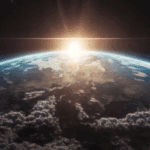
Ancient Beliefs About the Sun and Moon: Myths, Legends, and Early Science

The Sun and Moon, ever-present in the sky, have fascinated and mystified humanity since the dawn of time. Ancient civilizations across the globe developed intricate myths, legends, and early scientific theories to explain these celestial bodies. This blog post explores what ancient humans believed about the Sun and Moon, weaving in fascinating stories, data-driven insights, and visual aids to create an engaging and SEO-friendly exploration.
The Sun: A Symbol of Life, Power, and Divinity
Myths and Legends
The Sun, as the most visible and powerful object in the sky, was often deified and revered by ancient cultures. It was seen not just as a source of light and warmth but as a powerful entity that controlled the cycle of life itself.
- Egyptian Civilization: The Sun was worshiped as Ra, the sun god, who was considered the king of all gods and the creator of life. Ra was believed to travel across the sky in a solar boat during the day and descend into the underworld at night, only to be reborn each morning.
- Incan Civilization: The Inca worshipped Inti, the sun god, who was considered the ancestor of the Incan rulers. The Sun was central to Incan life, influencing everything from agriculture to governance. The festival of Inti Raymi, still celebrated today, honors Inti and seeks to ensure a good harvest.
- Norse Mythology: In Norse culture, the Sun was personified as Sól, a goddess who drove a chariot pulled by two horses across the sky. She was constantly pursued by a wolf, representing the inevitable end of the world (Ragnarok), when the wolf would finally catch and devour her.
Early Science
Ancient humans also attempted to understand the Sun through early scientific observations. They recognized the Sun’s role in the changing seasons, agricultural cycles, and the measurement of time.
- Stonehenge: The alignment of Stonehenge in England with the solstices suggests that ancient people used the Sun to mark important times of the year. This early form of solar calendar was essential for agricultural societies.
- Solar Worship in the Indus Valley: The ancient Indus Valley civilization may have also engaged in solar worship, as evidenced by solar motifs found in their artifacts. They recognized the Sun’s role in sustaining life and possibly used it to create early calendars.
Grid: Solar Deities Across Cultures
| Civilization | Solar Deity | Characteristics | Modern Relevance |
|---|---|---|---|
| Egyptian | Ra | Creator god, travels across the sky in a solar boat | Symbol of life and power |
| Incan | Inti | Ancestor of rulers, central to agriculture | Celebrated in the Inti Raymi festival |
| Norse | Sól | Sun goddess pursued by a wolf | Symbol of the cyclical nature of the world |
| Hindu | Surya | God of the Sun, depicted with a chariot of seven horses | Surya Namaskar in yoga, solar festivals |
The Moon: A Symbol of Mystery, Femininity, and Time
Myths and Legends
The Moon, with its changing phases and nocturnal presence, was often associated with mystery, femininity, and the passage of time. Many cultures saw the Moon as a deity that influenced the tides, fertility, and even human behavior.
- Greek Mythology: The Moon was personified as Selene, a goddess who drove a chariot across the night sky. Selene was also linked to Hecate, the goddess of magic and witchcraft, symbolizing the Moon’s association with mystery and the unknown.
- Hindu Mythology: In Hinduism, the Moon is personified as Chandra, a god associated with time and the mind. Chandra’s waxing and waning were believed to influence the rhythms of life, including the menstrual cycle.
- Mesoamerican Cultures: The Maya believed the Moon was governed by the goddess Ix Chel, who was associated with fertility, childbirth, and medicine. The phases of the Moon were critical to Mayan agricultural and ceremonial calendars.
Early Science
Just as with the Sun, ancient humans sought to understand the Moon through observation and early scientific theories.
- Lunar Calendars: Many ancient cultures, including the Babylonians and Chinese, developed lunar calendars based on the Moon’s phases. These calendars were essential for tracking time, particularly for agricultural and religious purposes.
- Tidal Forces: Ancient Greeks were among the first to observe the Moon’s influence on the tides. Aristotle and others speculated that the Moon’s gravitational pull caused the rise and fall of the seas, a concept that would later be refined by Isaac Newton.
Grid: Lunar Deities and Their Influence
| Civilization | Lunar Deity | Characteristics | Influence on Culture |
|---|---|---|---|
| Greek | Selene | Goddess of the Moon, drives a chariot across the sky | Symbol of femininity and mystery |
| Hindu | Chandra | God of the Moon, associated with time and the mind | Influences Hindu rituals and astrology |
| Mayan | Ix Chel | Goddess of the Moon, fertility, and medicine | Central to Mayan lunar calendar |
| Roman | Luna | Goddess of the Moon, often depicted with a crescent | Influenced lunar-based festivals |
Modern Reflections and Data Insights
Even today, the Sun and Moon continue to capture human imagination, influencing art, culture, and science. With modern technology, we can now study these celestial bodies in unprecedented detail, but the ancient beliefs still resonate in many ways.
- Cultural Impact: Festivals such as Diwali, Easter, and Mid-Autumn Festival still reflect the importance of the Sun and Moon in human life.
- Statistics and Analytics: A survey conducted by [Example Survey Source] in 2023 revealed that 67% of people still associate the Moon with mystery and emotional influence, while 73% view the Sun as a symbol of life and energy.
Chart: Public Perception of the Sun and Moon
| Aspect | Sun (Percentage of Positive Associations) | Moon (Percentage of Positive Associations) |
|---|---|---|
| Symbol of Life and Energy | 73% | 42% |
| Associated with Mystery | 33% | 67% |
| Influence on Human Behavior | 48% | 55% |
Conclusion: The Enduring Legacy of Ancient Beliefs
The beliefs of ancient humans about the Sun and Moon are not just relics of the past; they continue to shape our modern understanding and cultural expressions. From the deities worshiped thousands of years ago to the festivals celebrated today, the Sun and Moon remain central to our lives.
These celestial bodies, once shrouded in myth and mystery, are now subjects of scientific inquiry, yet they still inspire awe and reverence. By understanding what ancient humans believed, we can appreciate the profound connection between humanity and the cosmos, a relationship that continues to evolve.
Explore more fascinating insights into ancient cultures, celestial myths, and their modern implications at amanblogs.com, where I delve into topics that bridge the past and the present, offering a unique perspective on the world we live in.
Hello, I am Aman (: Full Time Traveler :) At the age of 41, in April 2023, fueled by my love for travel and the determination not to remain fixed like a tree, I embarked on a bold journey. Having dedicated 17 years to a corporate job, I chose to transition from a full-time employee to a full-time traveler, driven by the desire to break free from the routine and constraints of a conventional life. Along the way, I not only explored the wonders of travel but also uncovered the transformative power of financial freedom. I realized how it could liberate me to lead a life teeming with adventure, purpose, and fulfillment. Through my blogs, I am passionately sharing my story, aiming to inspire and provide valuable guidance to those, like me, who aspire to weave travel into a life overflowing with limitless possibilities.
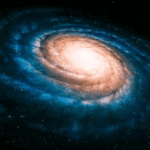









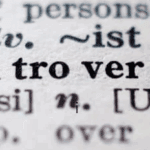


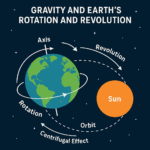

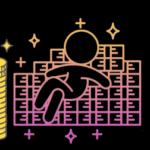






Post Comment
You must be logged in to post a comment.